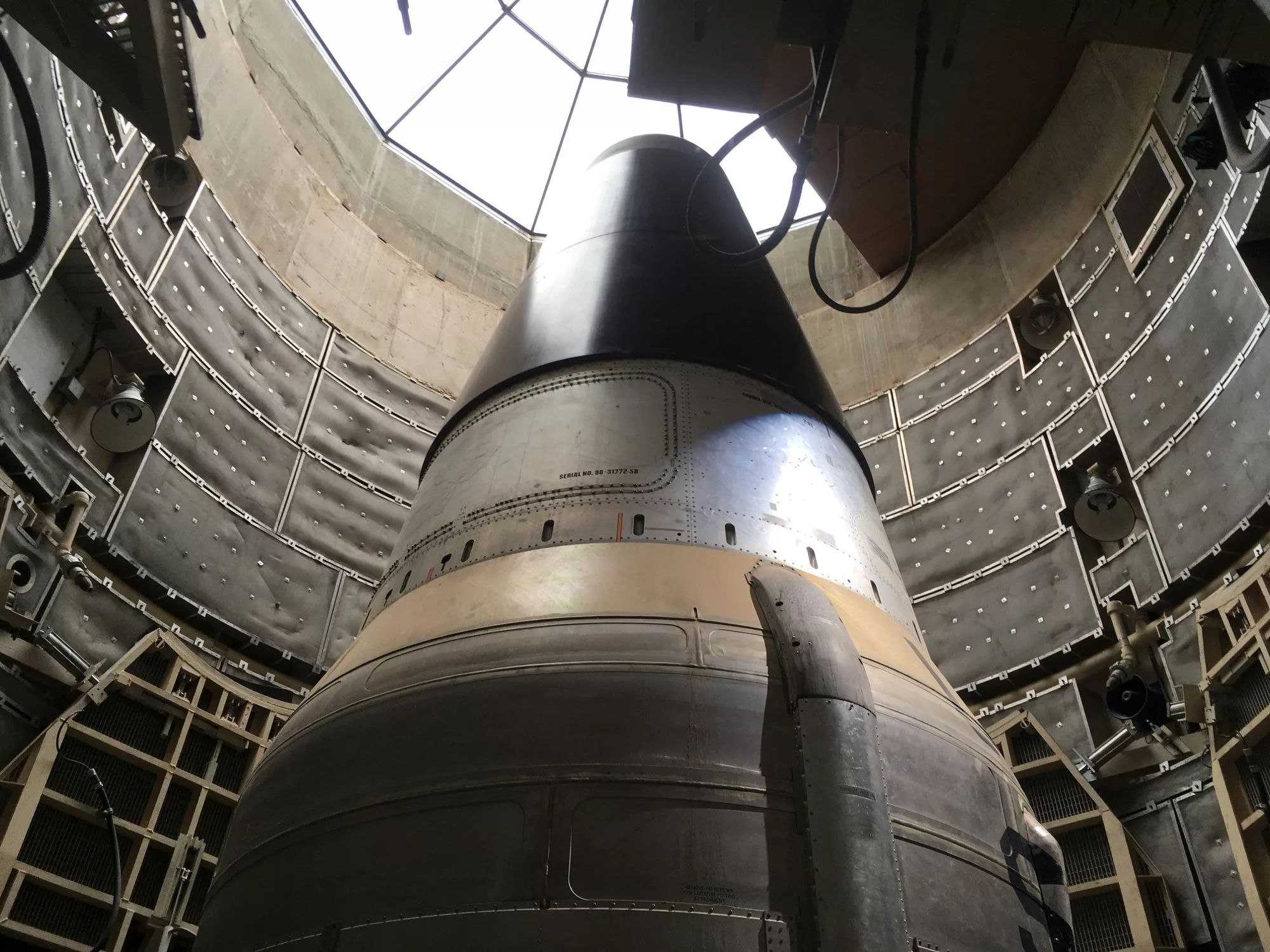Few developments have shaped South Asia’s security landscape as profoundly as Pakistan’s decision to develop nuclear weapons. Unlike the early nuclear powers, whose programs emerged during or shortly after World War II, Pakistan’s path unfolded later and under very different conditions—marked by regional rivalries, shifting alliances, and repeated military conflict.
The program took shape in the aftermath of India’s first nuclear test in 1974, which altered the regional balance and prompted Pakistan’s leadership to view a nuclear deterrent as a strategic necessity. What followed was a decades-long effort that combined domestic research, covert procurement, and sustained political and military backing—carried out largely outside public view.
This article traces the origins of Pakistan’s nuclear program, the reasons behind its pursuit, and the methods used to bring it to fruition. It also explores the broader context in which these decisions were made, offering a clearer picture of how Pakistan became one of the world’s recognized nuclear-armed states.
The Genesis of Nuclear Aspirations
The India Factor
To understand Pakistan’s drive to acquire nuclear weapons, one must first appreciate its troubled relationship with India. Since their simultaneous birth in 1947 during the violent partition of British India, Pakistan and India have fought multiple wars and remained locked in an enduring rivalry. The trauma of Partition, the Kashmir conflict, and Pakistan’s perception of Indian dominance in the region formed the psychological basis of its national security strategy.
India’s first nuclear test in May 1974—codenamed “Smiling Buddha”—was the turning point. Though India insisted it was a “peaceful nuclear explosion,” Pakistan did not buy the rhetoric. To Islamabad, it was a clear signal of India’s intention to dominate the region with nuclear superiority. It is no exaggeration to say that India’s 1974 test was the single most important external catalyst in driving Pakistan’s nuclear weapons program into overdrive.
Zulfikar Ali Bhutto’s Resolve
The political will behind Pakistan’s nuclear journey came from one man above all: Zulfikar Ali Bhutto. Before becoming Prime Minister, Bhutto had already begun shaping Pakistan’s strategic vision during his tenure as Foreign Minister in the 1960s. In 1965, Bhutto famously declared: “If India builds the bomb, we will eat grass or leaves, even go hungry, but we will get one of our own.”
This was not mere rhetoric. After India’s 1974 nuclear test, Bhutto convened a meeting of top scientists in the city of Multan. This gathering, later dubbed the “Multan Conference,” marked the formal beginning of Pakistan’s nuclear weapons program. The mission was clear: develop a nuclear capability to match India, no matter the cost.
Building the Bomb: The Science and Strategy
Indigenous vs. Imported Technology
Unlike countries like France or the UK, which received early technical assistance from the U.S. under programs like the “Atoms for Peace” initiative, Pakistan had to operate in a hostile environment. After India’s nuclear test, Western powers, particularly the United States, became wary of nuclear proliferation in South Asia. This made it nearly impossible for Pakistan to acquire the needed technology through legal means.
As a result, Pakistan opted for a dual approach: developing indigenous capabilities while simultaneously seeking materials and know-how through covert channels.
The Role of Dr. Abdul Qadeer Khan
One of the most pivotal and controversial figures in Pakistan’s nuclear saga is Dr. Abdul Qadeer Khan, a metallurgist trained in Germany and the Netherlands. In the 1970s, Dr. Khan was working at a Dutch company involved in uranium enrichment technology. Upon learning of India’s nuclear test, he offered his services to the Pakistani government.
Dr. Khan’s greatest contribution was bringing with him the blueprints and technical knowledge of gas centrifuge enrichment—a crucial technology for producing weapons-grade uranium. He established the Khan Research Laboratories (KRL) in Kahuta, which became the core facility for uranium enrichment in Pakistan.
Despite international scrutiny and pressure, KRL successfully enriched uranium to weapons-grade levels by the late 1980s. Though Dr. Khan would later be accused of proliferating nuclear secrets to countries like Iran, Libya, and North Korea, his role in Pakistan’s nuclear development remains foundational.
Plutonium vs. Uranium Route
Pakistan initially focused on the uranium route due to easier access to natural uranium and the expertise brought by Dr. Khan. However, to diversify and advance its capabilities, Pakistan also developed plutonium-based technologies through the Pakistan Atomic Energy Commission (PAEC), under the leadership of Munir Ahmad Khan.
While uranium enrichment took place at KRL, PAEC worked on reactor-based plutonium production at facilities like the Khushab Nuclear Complex. This dual-track approach ensured redundancy and allowed Pakistan to build more compact and sophisticated warheads later on.
The Role of the Military and Strategic Doctrine
Nuclear Weapons as a Deterrent
From its inception, Pakistan’s nuclear program was built with deterrence in mind—not aggression. Pakistani strategists believed that nuclear weapons were the only means to neutralize India’s conventional military superiority.
This logic became especially strong after the 1971 Indo-Pak war, which led to the secession of East Pakistan and the creation of Bangladesh. That conflict was a deep wound in Pakistan’s psyche, underscoring the vulnerability of its territorial integrity. For the Pakistani military, the nuclear option was the ultimate guarantee that no future war would end in such humiliation again.
Civil-Military Dynamics
While Zulfikar Ali Bhutto kickstarted the nuclear program, the military soon became its primary custodian. As successive democratic governments came and went, the Pakistan Army ensured continuity and secrecy in the program. Even after Bhutto was overthrown and executed in 1979, the nuclear effort did not falter. Instead, it became more deeply embedded within the military establishment.
Key military leaders such as General Zia-ul-Haq oversaw critical phases of development, including weapons testing simulations, warhead design, and missile delivery systems. By the early 1990s, the program had matured to the point where Pakistan had not only functional warheads but also the means to deliver them via missiles like the Hatf and later the Shaheen series.
Facing the World: Sanctions, Espionage, and Diplomacy
Global Opposition and Sanctions
Pakistan’s nuclear ambitions did not go unnoticed by the global community. The U.S., in particular, applied various sanctions under the Pressler Amendment, which required the President to certify annually that Pakistan did not possess nuclear weapons. By 1990, when it became clear that Pakistan had crossed the nuclear threshold, the U.S. halted military aid and imposed sanctions.
These sanctions, however, had limited effect. Much of the development had already taken place, and Pakistan had grown increasingly self-reliant. Moreover, China emerged as a key strategic ally, providing assistance in missile technology, reactor components, and even civilian nuclear cooperation.
Espionage and Secrecy
Given the clandestine nature of the program, intelligence and counter-intelligence operations played a major role. Western agencies like the CIA and MI6 closely monitored Pakistani scientists, facilities, and procurement networks. Yet despite numerous leaks, the program remained remarkably resilient.
Pakistan developed a global procurement network using front companies, middlemen, and diplomatic cover to acquire sensitive materials. Equipment was sourced from Europe, North America, and even Asia—often through legal loopholes or black-market channels. This web of covert operations was instrumental in evading international controls.
The 1998 Tests: Pakistan Declares Itself a Nuclear Power
India Goes First
On May 11 and 13, 1998, India stunned the world by conducting five nuclear tests in the Thar Desert under Prime Minister Atal Bihari Vajpayee. This act broke a de facto moratorium that had lasted since India’s first test in 1974. Once again, Pakistan was thrust into a position where it had to respond—both to signal its own capabilities and to restore the strategic balance.
Pakistan’s Response: Chagai-I and II
On May 28, 1998, Pakistan conducted five underground nuclear tests in the Chagai Hills of Balochistan. Two days later, a sixth test followed. These tests, collectively known as Chagai-I and Chagai-II, marked Pakistan’s formal entry into the global nuclear club.
The announcement was met with nationwide jubilation. For many Pakistanis, the tests symbolized not just military power but also scientific achievement and national pride. The government declared May 28 as “Youm-e-Takbir” (Day of Greatness).
Internationally, the tests triggered condemnation and fresh sanctions, particularly from the United States and Japan. But by then, Pakistan had achieved what it set out to do: establish itself as a credible nuclear power.
Aftermath and Legacy
Command and Control
Following the 1998 tests, Pakistan took steps to institutionalize its nuclear command and control infrastructure. The National Command Authority (NCA) was established in 2000 to oversee policy, deployment, and use. The Strategic Plans Division (SPD) became the secretariat and operational arm of the NCA, composed mainly of military personnel but overseen by the civilian leadership.
These structures were designed to ensure tight control, reduce risks of unauthorized use, and maintain strategic stability in the region.
Nuclear Doctrine and Posture
Unlike India, which has a declared “No First Use” (NFU) policy, Pakistan maintains strategic ambiguity. While it has not publicly articulated a detailed nuclear doctrine, its posture suggests that it is willing to use nuclear weapons in response to a conventional threat to its existence.
In recent years, Pakistan has also developed tactical nuclear weapons, raising concerns about command and control in battlefield situations. These developments have sparked fresh debates among analysts about the risks of escalation and miscalculation in South Asia.
Conclusion
Pakistan’s acquisition of nuclear weapons was not born out of ambition or adventurism—it was the result of a deeply rooted perception of vulnerability, compounded by historical trauma and regional insecurity. From the embers of Partition to the nuclear tests of 1998, Pakistan’s journey was shaped by leaders with vision, scientists with ingenuity, and a national security establishment with a single-minded focus on deterrence.
In crossing the nuclear threshold, Pakistan irrevocably altered the security architecture of South Asia. Today, it remains one of the few countries outside the Non-Proliferation Treaty (NPT) to possess nuclear weapons. While the dangers of proliferation, conflict escalation, and arms races are real, so too is the role that nuclear deterrence has played in preventing full-scale wars between India and Pakistan for over two decades.
Whether this balance holds in the future will depend on diplomatic wisdom, political restraint, and the ever-evolving technologies that shape warfare in the modern world. But one thing is certain: the story of Pakistan’s nuclear journey is a defining chapter in the geopolitics of the 20th century, and its consequences are still unfolding today.




